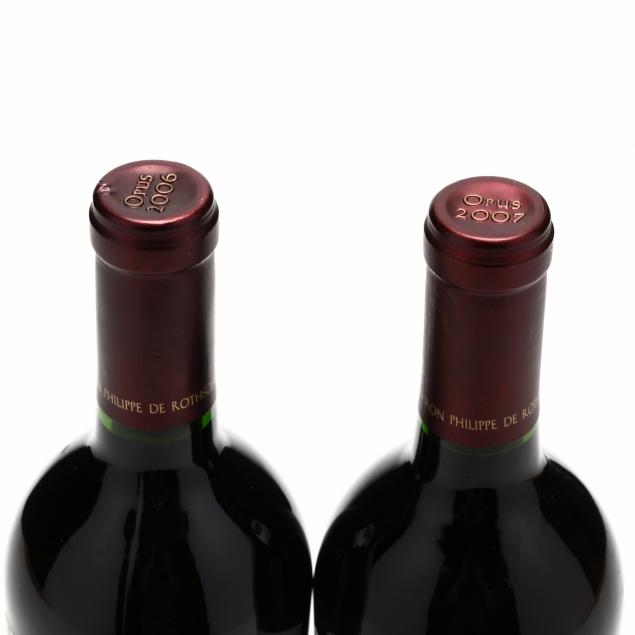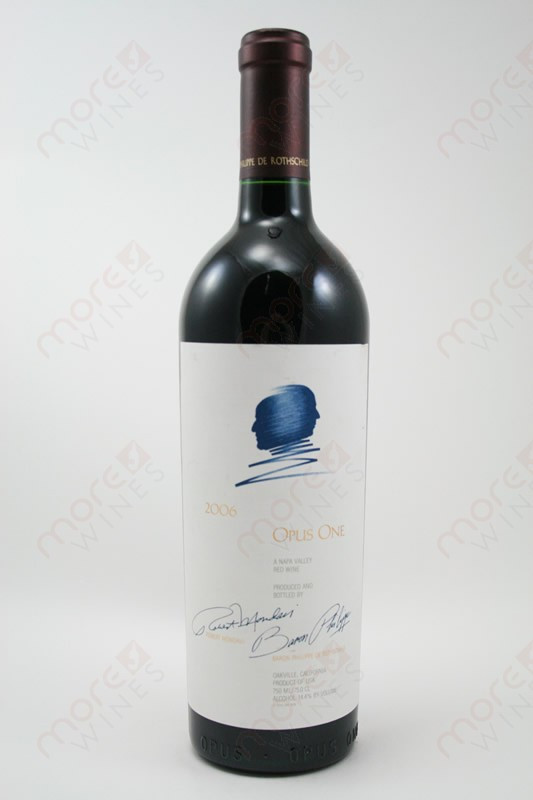
So on a beautiful August day, the Wine Access offices in the town of Napa emptied. But realistically, we’d been looking forward to it for years. Most of the production centers around the extraction of color and flavor from the grape skin.Technically, we’d had the appointment for about a month.
#OPUS ONE 2006 SKIN#
The actual red color comes from anthocyan pigments (also called anthocyanins) from the skin of the grape (exceptions are the relatively uncommon teinturier varieties, which produce a red colored juice). Interestingly, black grapes yield a juice that is greenish-white. The color of red differs based on the grapes variety or varieties used. Red wine is wine made from dark-coloured grape varieties.

On its own, Stags Leap District is tucked into the very south east corner of the valley. Higher elevation sites include Howell Mountain on the east and Mount Veeder on the west. Helena, Rutherford, Oakville, Yountville, and Oak Knoll. From north to south, the valley consists of Calistoga, St. To account for its geographical diversity, the valley is split up into a number of AVAs. Although the climate is suitable for a wide range of varieties, Cabernet Sauvignon is dominant and practically synonymous with the region. The country’s most famous wine producing region, Napa Valley stretches from the North bay of San Francisco Bay in the South, all the way up to Mount Saint Helena in the North. While Cabernet Sauvignon, Pinot Noir, and Chardonnay are by far the most popular fine wine varieties, producers in the Golden State have also experimented with an unparalleled array of diverse varieties, including Zinfandel, Syrah, Nebbiolo, Sangiovese, and Tempranillo. The regions of Napa Valley and Sonoma County have become as renowned as France’s Bordeaux and Burgundy. Although it has a history spanning over 200 years, it has experienced most of its growth in the last fifty years. As of 2010 harvest, reports indicate that Washington, New York & Oregon account for additional 6% of production, meanwhile Virginia, Missouri and Texas's wine industries are growing to a point beyond that of just a tourist attraction.Ĭalifornia is one of the most diverse wine producing regions of the world.


Cabernet Sauvignon also plays an increasing role in Tuscany, Italy, where it is blended with native varieties such as Sangiovese to produce the Super Tuscans.Īlthough wine is made in all 50 states, it is understandable, with almost 90% of the country's production, that California is synonymous with domestic wine. It is grown extensively throughout Southern Australia, with some outstanding examples from the Terra Rossa soil of Coonawarra. Julien, and has achieved equal success in California’s Napa Valley. It is the main constituent of the Bordeaux blend in the revered communes of Pauillac, St. Cabernet Sauvignon’s success is partly due to its ability to adapt to a range of soils and climates. Maturation in small oak barrels can develop a complex range of aromas from cedar wood, cigar box and tobacco to eucalyptus and undergrowth. Common aromas include blackcurrants, mint, graphite, and forest floor, to name a few. Grown in just about every wine producing region and climate, Cabernet Sauvignon can express a huge range of aromas, from green peppers in cool climates through to dark jammy fruit in hot regions. Cabernet Sauvignon is one of the most prominent dark-skinned grape varieties except Merlot in terms of area under vines, but which comprises our largest selection of wines.


 0 kommentar(er)
0 kommentar(er)
